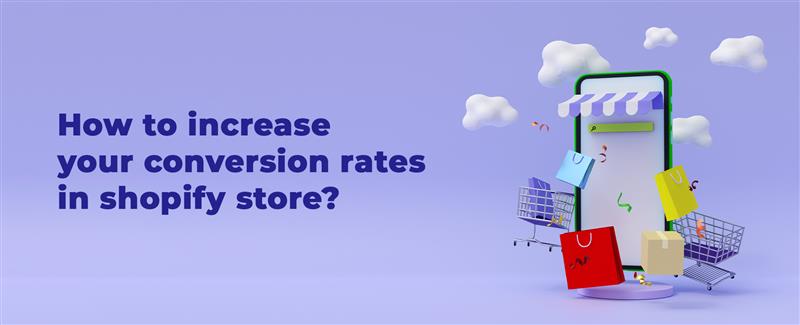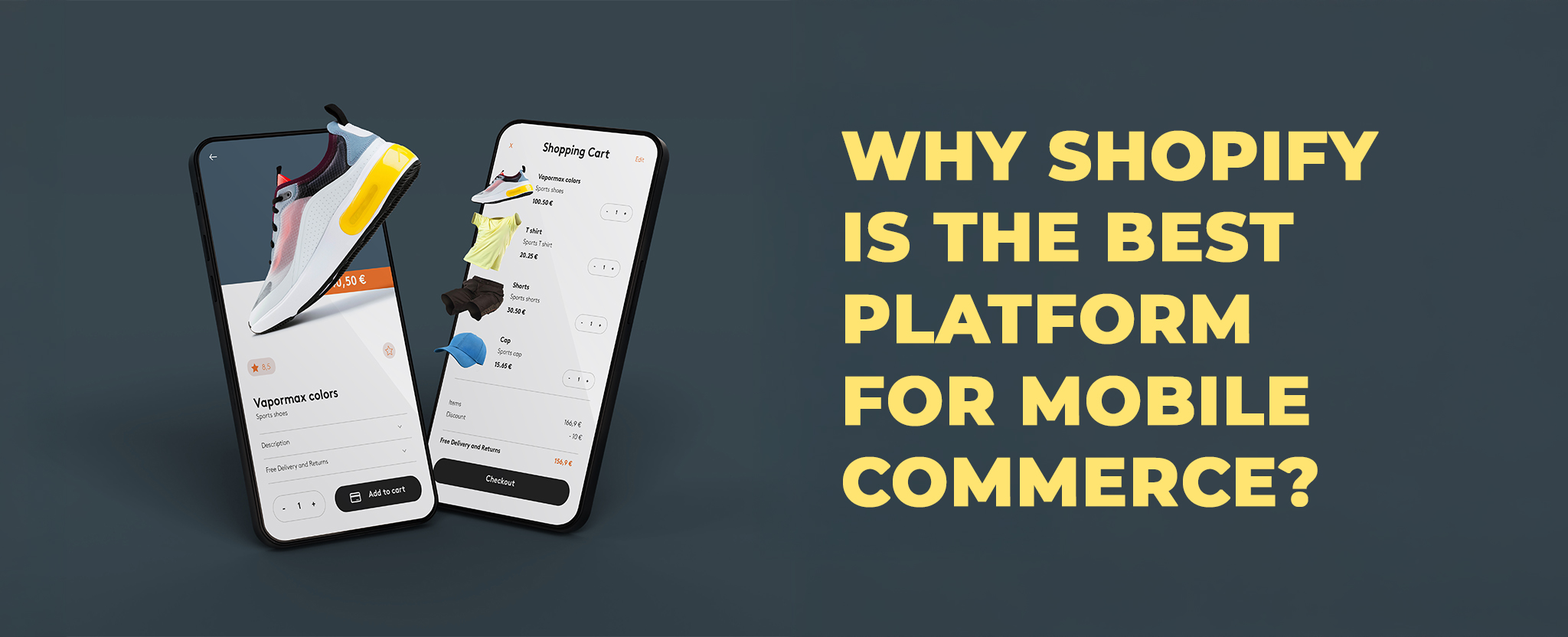How to increase your conversion rates in Shopify stores?
18 Dec 25 


Do you want to supercharge your online sales? Focus on two key areas: getting more people to your website and turning those visitors into buyers. While many marketers put all their energy into attracting visitors through social media or email campaigns, the real game-changer is improving your conversion rate – that’s the percentage of visitors who actually make a purchase.
By increasing your conversion rate, you can make more sales without needing more traffic. This means a better return on your marketing investment. Plus, when you make it easier for visitors to buy, you’re creating a better experience for them too.
The average online store converts about 1.4% to 2.5% of its visitors, though this varies by industry. Top performers can reach 3-5% or higher. Even if you’re hitting average numbers, there’s usually room to do better. Remember, every little increase in your conversion rate means more money in your pocket.
Think of improving your conversion rate as a mix of science and creativity in digital marketing. First, you gather data. Then, you use that information to come up ideas for improvement. The end goal? To make buying from your store as smooth as possible for your potential customers.
Ready to dive in? Let’s explore some effective ways to gather insights about your online store and use them to boost your conversion rate.
Have a Chat with Your Customers
You might think that improving conversions is all about numbers, but some of the best insights come from simply talking to your customers.
Try setting up formal customer interviews. Ask questions like:
- What made you decide to buy this product?
- Which feature was most important to you?
- Did you have any doubts or problems when making your purchase?
You can also get valuable feedback by using on-site surveys or chat tools. These can give you:
Questions your website might not answer about your product. For instance, if you sell food, visitors might wonder about storage. Should they refrigerate it? Your product or FAQ page should clear this up.
New perspectives on your value proposition. You might discover that while you’re all about health benefits, customers are buying because you’re cheaper. This insight can reshape your copywriting.
Set Clear Goals for Your Website
It’s tough to improve your conversion rate if you’re not tracking progress. Start by deciding what actions count as conversions. Is it a purchase? A newsletter sign-up? Whatever it is, make it clear.
Be ambitious but realistic with your goals. Look at your conversions from the last month, three months, and six months to get a baseline. Then, set targets that push you a bit. Once you’ve got your goals, keep tabs on your progress through regular analytics checks.
Here are some goal examples to boost your conversion rate:
- Bump up website conversions by 10% in six months
- Push conversion rate from 1.5% to 2% by Q4’s end
- Score 500 more conversions each month
Dig Into Your Website’s Data
Hard data can reveal user behavior and help you make smart decisions without bias. A customer might say they love a product page design, but if another page drives 20% more conversions, the numbers don’t lie.
Your conversion rate (the percentage of visitors who take action) is your north star. To get the most insight, break it down by page and traffic source. Google Analytics is a popular tool for this. Here’s how to slice and dice your data:
Pages
Looking at data by page shows which ones are star performers. This can help you figure out why they’re doing so well. By studying user behavior, you can map out your ecommerce conversion funnel. For example, you might learn that users are more likely to buy after visiting a collection page rather than going straight to a product page. This insight can help you tweak your site’s navigation to guide visitors better.
Traffic Sources
Traffic sources are key to understanding which visitors are most likely to convert. You might discover that Google Ads outperform Instagram Ads in terms of conversions. While you may need to investigate further to ensure both platforms are directing traffic to the same landing pages, this data can shape your overall traffic strategy, helping you focus on high-quality sources that boost conversions.
You may also read 13 Effective Proven Customer Retention Strategies For eCommerce Stores Like Shopify.
Identify and Smooth Out Friction Points
Every website has areas that could be smoother for visitors. Here’s how to measure and improve your site’s user experience:
Track Your Most-Viewed FAQs
Frequently asked questions (FAQs) are crucial for research-oriented visitors. However, if they’re too dense or overwhelming, they can hinder the conversion journey. Popular FAQs often highlight opportunities to integrate solutions directly into your main site experience. Tools like HelpLab can help you track FAQ interactions.
Analyze Scroll Depth and Heat Maps
These reports show exactly where users drop off on your pages. If you notice a sudden heat drop (indicating fewer viewers) at a specific section, it likely indicates high friction. Heatmap.com and similar tools offer ecommerce-focused options for both these reports.
Examine Purchase Funnel Drop-Offs
Compare your funnel’s stage-by-stage drop-off rates to industry benchmarks, like those from Littledata. This can reveal where your conversion funnel might have extra friction. The payment info page is often a sticking point, as visitors reconsider the purchase value. This is a prime spot to add social proof, like testimonials or guarantees.
Refine Your Value Proposition
Your website’s value proposition is a major conversion driver. If your audience truly values your product, they may overlook minor technical issues or friction points.
A/B testing is the best way to improve your value proposition. If you’re running digital ads, test different taglines in your ad copy and use the winner on your site. Alternatively, use tools like VWO, Optimizely, or Convert to test copy changes directly on your site and see which version drives more conversions.
Check Your Technical Setup
Technical hiccups can seriously hamper your website’s ability to convert visitors. Common culprits include sluggish page loads, poor mobile experience, and broken links.
The good news? These issues are easy to spot and fix with the right tools. GTMetrix offers actionable speed insights for online stores. Google provides a free mobile-friendly test, and Screaming Frog can hunt down those pesky broken links.
Site Speed
Slow loading times can significantly hurt your conversion rate. Focus on Core Web Vitals: Largest Contentful Paint (how fast your main content loads), First Input Delay (how quickly your site responds), and Cumulative Layout Shift (how stable your page is while loading). Use tools like Google PageSpeed Insights to identify and fix speed issues.
Mobile Responsiveness
With more people shopping on mobile devices, ensure your site looks and functions well on all screen sizes. Pay special attention to thumb-friendly navigation and one-tap actions. Mobile users expect pages to load in under 3 seconds, so optimize images and code specifically for mobile.
Security
Make sure your site has SSL certification and displays trust badges to reassure visitors about their data safety. Show security seals near checkout buttons and payment fields.
customising these analyses can boost your conversion rates. To really nail it, try A/B testing your improvements to prove their worth.
Add Modern Payment Options
Checkout friction is one of the biggest conversion killers. Offering multiple payment methods can significantly reduce abandonment.
Include these payment options:
- Digital wallets like Apple Pay and Google Pay for one-tap checkout
- Buy Now, Pay Later services like Klarna, Afterpay, or Affirm for larger purchases
- Shop Pay for Shopify stores, which remembers customer info for faster repeat purchases
- Traditional methods like credit cards and PayPal
According to recent data, stores offering 3+ payment methods see up to 30% fewer checkout abandonments.
Use AI and Automation Smartly
Modern tools can personalize the shopping experience without adding workload to your team.
Product Recommendations
AI can suggest products based on browsing history, purchase patterns, and similar customer behavior. These recommendations typically appear on product pages, cart pages, and in follow-up emails.
Smart Search
Predictive search shows results as customers type, understanding misspellings and suggesting related products. Some tools even allow image-based search where customers upload a photo to find similar items.
Automated Email Flows
Set up sequences that trigger based on customer actions: welcome series for new subscribers, browse abandonment reminders, post-purchase follow-ups, and re-engagement campaigns for inactive customers.
Dynamic Content
Show different homepage banners, product suggestions, or promotions based on customer location, device type, or browsing history.
AI-powered features can handle routine tasks, letting you focus on strategy while improving the customer experience.
Boost Credibility with Customer Reviews
Nearly half of consumers trust reviews as much as personal recommendations. Seeing positive experiences from others can nudge hesitant shoppers to buy and reassure first-timers weighing their options.
Try these review strategies:
- Product-specific feedback: Show relevant reviews on each product page.
- Video testimonials: Encourage customers to share video reviews for extra trust. Video reviews can increase conversions significantly as they feel more authentic.
- Dedicated reviews page: Create a whole page showcasing customer feedback.
- Photo reviews: Let customers upload photos of products in use, which helps others visualize the purchase.
Display review counts and average ratings prominently. Even products with a few critical reviews (mixed with positive ones) often convert better than products with no reviews at all.
You may also read: What Is Shopify and How Does It Work: Beginner’s Guide.
Make Product Discovery a Breeze
Shoppers don’t want to hunt for hours. Those who know what they want are more likely to buy and often head straight to the search bar. In fact, research shows that visitors who use search are significantly more likely to convert, yet a poor search experience causes many to leave immediately.
A user-friendly search feature can help shoppers find products quickly and boost conversions. Consider rich features like:
- Image-based search
- Product recommendations as they type
- Helpful suggestions for no-result searches
- Filters by size, color, price, and rating
- Sort options that match how customers shop
Make your search bar visible on every page, and consider making it larger on mobile devices where screen space is limited.
Add Live Chat Support
Real-time assistance can make a huge difference in converting visitors. Live chat allows you to address concerns, answer questions, and guide shoppers through the buying process instantly. This personal touch can be the deciding factor for many customers.
Consider these live chat best practices:
- Offer 24/7 support if possible, or clearly state your availability hours
- Train your chat team to handle common questions and objections effectively
- Use chatbots for basic queries to free up human agents for more complex issues
- Integrate your chat system with your CRM software to provide personalized service
AI-powered chatbots can now handle roughly 80% of common queries, providing instant support while reducing costs. They can answer questions about shipping, return policies, sizing, and product details without human intervention.
Even a tiny hiccup can derail a shopper’s journey. But a live chat feature, whether manned by real people or automated, can be a game-changer. It’s your secret weapon to keep shoppers engaged, provide instant info, and guide them to their dream products.
Reduce Cart Abandonment
About 70% of shoppers add items to their cart but don’t complete the purchase. Recovering even a small percentage of these lost sales can significantly boost revenue.
Email Recovery Sequences
Send a series of emails to remind customers about items they left behind:
- First email (1 hour later): Simple reminder with cart contents
- Second email (24 hours later): Add social proof or answer common objections
- Third email (72 hours later): Consider offering a small discount or free shipping
Exit-Intent Popups
When someone moves their cursor to close the tab, trigger a popup offering help, a discount, or highlighting your return policy. Keep it simple and non-intrusive.
Simplify Checkout
- Offer guest checkout (don’t force account creation)
- Show progress indicators so customers know how many steps remain
- Display security badges and accepted payment methods
- Keep form fields to a minimum
- Show shipping costs early to avoid surprise
Address Common Concerns
Add trust elements near the checkout button: free returns, money-back guarantee, customer service contact, estimated delivery date, and any certifications or awards your store has received.
Test Drive Your Buying Journey
Want to boost your conversion rates? Try A/B testing different parts of your buying journey. Focus on your biggest pain points and play around with colors, layouts, and wording. It’s like getting a sneak peek into your customers’ minds.
Here’s what you could test:
Photos
Beef up your product pages with more pics, add some interactive features, or use 360-degree tools to help customers really visualize your products. Test showing products in use versus plain product shots on white backgrounds.
Calls-to-Action (CTAs)
Mix up the colors, tweak the wording, and move them around. Why not try a floating “Add to Basket” button that stays visible as customers scroll? Test urgent language (“Shop Now”) versus softer language (“View Details”).
Guest Checkout
Give shoppers the option to buy without signing up. It’s like removing a hurdle from their path. Test whether offering account creation after purchase converts better than requiring it upfront.
Review Placement
Shuffle your reviews around on your product page. Find out where they shine the brightest. Some stores find success with reviews above the fold, while others see better results with reviews near the add-to-cart button.
Product Descriptions
Make your descriptions easy to skim. Throw in some bullet points, add a dash of personality, and use emojis if it fits your brand vibe. Test shorter descriptions with video content versus longer, detailed text descriptions.
Urgency and Scarcity
Test adding countdown timers for sales, low stock alerts (“Only 3 left!”), or recent purchase notifications (“5 people bought this today”). These can increase urgency, but overuse can backfire, so test carefully.
Checkout Form Fields
Test reducing the number of fields, using auto-complete for addresses, or breaking checkout into multiple steps versus a single-page checkout.
Most stores see initial testing results within 30-60 days. Start with changes that affect high-traffic pages or bottleneck points in your funnel.
Common CRO Mistakes to Avoid
Learning from others’ mistakes can save you time and money:
- Testing too many things at once: Change one element at a time so you know what worked
- Ending tests too early: Wait for statistical significance before declaring a winner
- Ignoring mobile users: Most traffic is mobile, so prioritize mobile experience
- Hiding shipping costs: Surprise fees at checkout are a top reason for abandonment
- Making it hard to contact you: Display contact options clearly
- Complicated navigation: If customers can’t find products easily, they’ll leave
- Auto-playing videos: These annoy more customers than they help
- Requiring account creation: Let customers checkout as guests
- Too many popups: One well-timed popup is fine; five is overwhelming
Final Thoughts
Effective Conversion Rate Optimization is crucial for transforming website visitors into loyal customers and maximizing revenue. By implementing strategic initiatives aimed at enhancing the online shopping experience, e-commerce businesses can significantly improve conversion rates and foster sustainable customer growth.
Start with these high-impact changes that typically show results fastest:
- Fix any technical issues (slow load times, mobile problems, broken links)
- Add multiple payment options including digital wallets
- Implement cart abandonment email sequences
- Add or improve customer reviews on product pages
- Simplify your checkout process
Remember that CRO is ongoing work, not a one-time project. Customer expectations evolve, technology changes, and your business grows. Keep testing, keep listening to your customers, and keep refining. Even small improvements compound over time, turning more browsers into buyers and building a more profitable store.
- Agentic AI1
- Android Development3
- Artificial Intelligence35
- Classified App3
- Custom App Development5
- Digital Transformation12
- Doctor Appointment Booking App14
- Dropshipping1
- Ecommerce Apps40
- Education Apps2
- Fintech-Apps37
- Fitness App4
- Flutter4
- Flutter Apps20
- Food Delivery App5
- Grocery App Development1
- Grocery Apps3
- Health Care10
- IoT2
- Loyalty Programs9
- Matrimony Apps1
- Microsoft1
- Mobile App Maintenance2
- Mobile Apps130
- Product Engineering6
- Progressive Web Apps1
- React Native Apps2
- Saas Application2
- Shopify9
- Software Development3
- Taxi Booking Apps7
- Truck Booking App5
- UI UX Design8
- Uncategorized6
- Web App Development1



















Comments